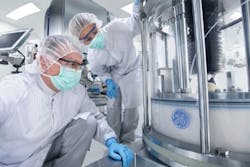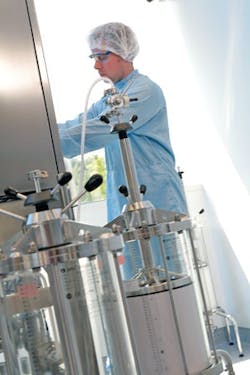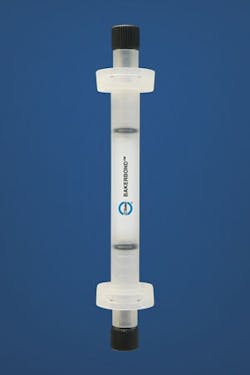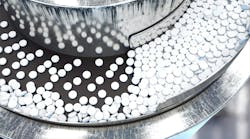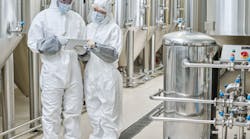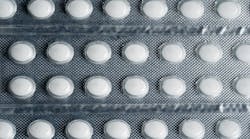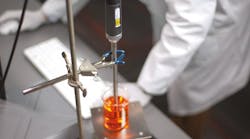Our cover story this month details the results of BioPlan’s Annual Report and Survey of Biopharmaceutical Manufacturing Capacity and Production. A common concern reported from respondents (both end-users and suppliers) was capacity constraints, and how improvements in upstream processing technologies have led to downstream processing bottlenecks. To address these problems, industry suppliers are developing new technologies to improve downstream processing. But adding new technologies can be challenging in this highly regulated industry.
GE Healthcare’s new Protein A chromatography resin, MabSelect PrismA helps biopharmaceutical manufacturers improve their monoclonal antibody purification capacity by up to 40 percent.
According to Mats Gruvegard, downstream marketing program leader at GE Healthcare Life Sciences, the efficiency with which cells produce target proteins during the biomanufacturing process has improved radically during the past few years, creating pressure on the purification and other downstream operations. He suggests looking at the entire production chain - from start to finish - as that determines how productive biomanufacturing platforms and factories actually are. There are a number of areas in downstream operations that have to be improved and invested in, including new chromatography resins that improve the overall purification capacity.“Monoclonal antibody purification is an example where the downstream operations may become a bottleneck,” Gruvegard says. “Monoclonal antibodies (mAbs) represent the largest and fastest growing segment of biopharmaceuticals, and almost all commercial mAb manufacturing processes use a Protein A chromatography as the initial capture step. With their high selectivity for the antibody Fc region, Protein A resins provide an efficient, almost generic mAb purification platform. There are, however, remaining challenges with the current Protein A chromatography technology: the increased upstream titers could potentially make this step the rate-limiting step in downstream processing. Protein A chromatography columns are also more prone to bioburden contamination due to heavy impurity load and weak tolerance towards sodium hydroxide, which is one of the most cost-efficient cleaning-in-place solutions.”
To address capacity constraints in the Protein A capture step, he says there are several improvements taking place. “One option is that some companies design in the evaluation phase of their Protein A capture step into continuous mode. There is also an option to work with variable loading times to optimize resin capacity and resin utilization per time unit,” Gruvegard adds.
GE recently announced MabSelect PrismA, a Protein A chromatography resin with increased dynamic binding capacity and alkaline stability up to 1 M NaOH. This offers a possibility to improve the productivity of current chromatography columns and systems without costly capital expenditures, making more efficient use of the existing manufacturing footprint. With these additional tools and process design options, downstream operations can keep pace with upstream operations and increase overall productivity in mAb processing.
MOLECULE CHALLENGES
Versatile hydrophobic interaction chromatography uses Thermo Scientific POROS HIC resins. HIC resins can be used at all steps of the purification process including capture, intermediate and final polish purification.
Another challenge facing the biopharma industry today is how to supply the molecules, which are critical and important for saving lives, to the wider population; and how to make a larger amount of protein and scale it up.According to Nandu Deorkar, Ph.D., vice president, R&D at Avantor, “It’s challenging to make a lot more protein when the processes are designed to produce much less. You have to try something different to produce higher yield. You have to separate more molecules per liter of resin, a power of ten faster.
A second issue is the overall diversity of the molecules.
A third issue is cost - minimizing the research and manufacturing cost.”
“One way to make improvements in process scale purification is to reduce the number of steps in the process,” Deorkar says. “If you change from four chromatography steps to two steps, then the transition to a continuous process becomes much easier. But if you have three or four chromatography steps, it’s not that easy to move to a continuous process. With resin chemistry of multi-mode and mixed-mode, there is a potential opportunity to reduce those steps and make things easier.”
For chromatography, Avantor is looking at expanding its portfolio of resins to include some affinity chemistry, looking at increasing the capacity of the column, increasing the lifecycle of the resin or increasing the ability to clean the column efficiently. They’re also looking at increasing the binding capacity or separation capacity by using another mixed-mode chemistry approach in conjunction with buffer additives. In addition, they are researching how they can improve the overall ecosystem around the chromatography - with the buffers, the cleaning agent, etc., and how they all work together in tandem.
BIOTHERAPEUTIC ADVANCEMENTS
Avantor is introducing new J.T.Baker ion exchange chromatography media based on a highly porous and rigid polymeric backbone designed for high velocity monoclonal antibody purification.
Advances in the development of biotherapeutics are generating an increasing range of complex molecules such as antibody drug conjugates (ADCs), antibody fragments and bispecific entities, which lead to higher product specific impurities and unique purification challenges, says John J. Li, technical application scientist III, Life Sciences Solutions, Purification R&D at Thermo Fisher Scientific.“In order to meet industry demands, process development scientists must balance multiple factors when devising new purification processes for these molecules,” Li says. “Capacity, resolution and the speed at which the process can be run must all be simultaneously optimized.
“Hydrophobic interaction chromatography (HIC) resins are proving to have an increasing utility for purifying challenging complex molecules,” Li says. “The variety of hydrophobicity in the HIC resins allow for specificity toward the specific characteristics of the target molecule and provide unique selectivity as well as flexibility around the process operating conditions,” he says. “HIC resins are highly selective for hydrophobic impurities such as host cell proteins, DNA and viruses, leached Protein A, extractables and leachables from resins and filters, process buffers and agents such as detergents that may have been used for virus reduction. Used as a polishing step, they are also particularly suitable for removing monoclonal antibody (mAb) aggregates using flow through chromatography, which are not effectively removed by anion exchange resins when present at high levels. When typical approaches are unsuccessful, HIC resins greatly increase the chance of purification success.”
Despite the need for these types of new technologies, respondents to the BioPlan survey say their adoption is slow. Primary bottlenecks appear to be related to efficiency, yield and quality of downstream process flows - particularly in harvest and chromatography steps - but there were also responses of unit operations and downstream areas causing concern. Thus, there is no single technology that can solve all downstream processing issues. But suppliers are working to improve their products and help manufacturers increase downstream efficiency and capacity.
